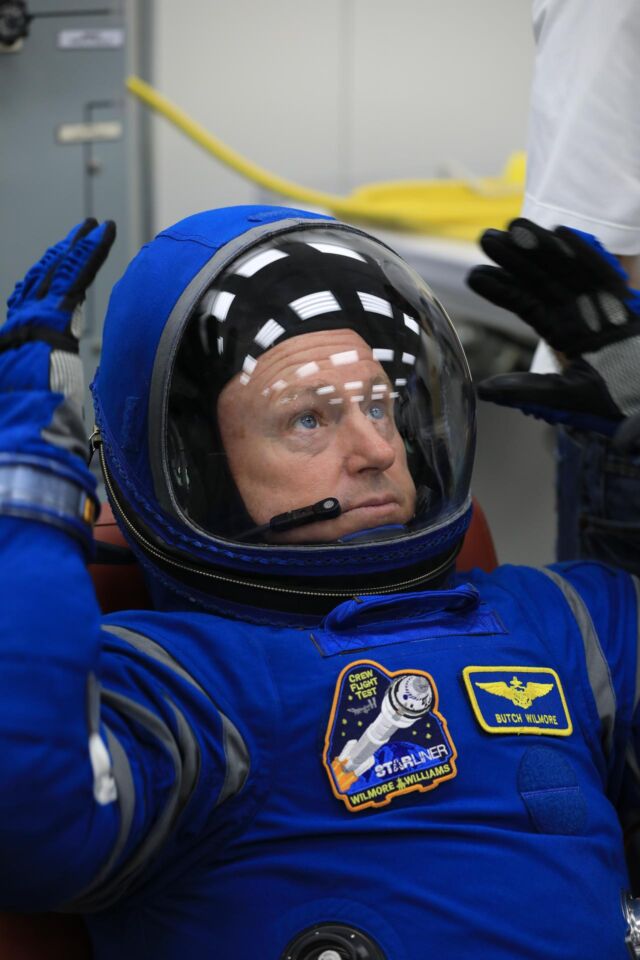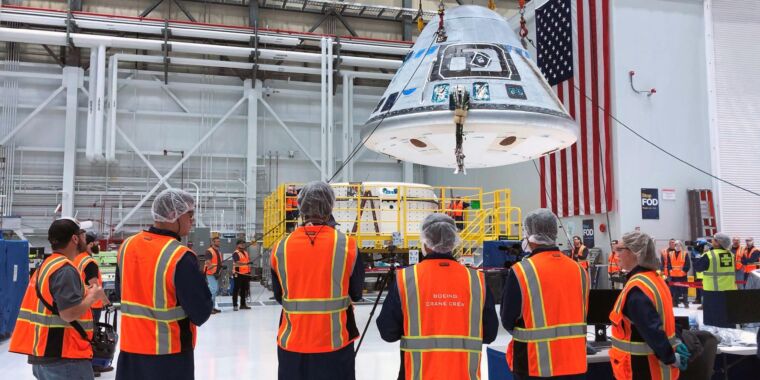We've heard this before, but it looks like Boeing has a few months to go before astronauts are finally launched into orbit aboard its commercial CST-100 Starliner crew capsule.
It was about two months before the previous launch date for this mission last July when Boeing and NASA officials decided to suspend launch preparations. During their final reviews to certify the Starliner for flight nearly a year ago, engineers discovered two technical problems that had somehow evaded detection for years.
One of these issues involved parts of the Starliner's parachute deployment system that did not meet required safety specifications. The other was the revelation that Boeing had installed flammable tape wrapped around bundles of wires throughout the spacecraft, creating a potential fire hazard. It was the latest in a series of technical problems to plague the Starliner program, delaying the new spacecraft's first test flight with astronauts from 2017 until this year.
Over the past year, engineers redesigned critical components of the parachute system and removed approximately 4,300 feet (1.3 kilometers) of flammable tape — known as P213 — from the Starliner spacecraft.
“We addressed a number of issues that delayed the launch from last summer and closed those issues,” said Steve Stich, NASA's Commercial Crew Program manager. “We had a successful parachute test in early January, with some modifications to the parachute system to improve the strength of those parachutes. It went well. We reviewed that data.”
This was the final test of the Starliner's parachute system before the spacecraft finally lifted off with astronauts on board, according to Stich. This upcoming flight, called the Crew Flight Test, is currently targeted for liftoff from Cape Canaveral Space Force Station in Florida no later than April 22, he said in response to Ars' questions.
Assuming the launch occurs on April 22, the launch time will be approximately 4:24 a.m. EDT (09:24 UTC), based on the alignment of the ISS's orbit with the launch pad in Florida. Veteran NASA astronauts Butch Wilmore and Sonny Williams will fly the Starliner spacecraft to dock with the space station, then return to Earth for an airbag-assisted landing in New Mexico. The entire test flight will last approximately 10 days.
Retrieve the tape
“We needed to test one with the new upgraded system,” Stitch said of the spacecraft's parachutes. “We changed the joints on the suspension lines, we strengthened the main canopies, and then there were also some soft links that needed to be strengthened, which we flew on two canopies in that test and they all looked good. We checked all the hardware after that canopy test in Yuma ( In Arizona), and they all looked great.
There are 24 of these soft fabric extensions on each Starliner spacecraft, with eight on each of the capsule's three main parachutes. Soft links are part of the network of lines that connect each parachute to the spacecraft. During final safety reviews last year, engineers discovered that soft-link connections were more vulnerable to failure than expected, especially in a situation where one of the spacecraft's three main latches was not deployed. A basic safety requirement for the Starliner program is that the spacecraft can land safely using two of its three chutes.
For the final test of the parachute before launch on January 9, Boeing verified the strength of the soft bonds using a test vehicle with the same weight as the Starliner spacecraft. During this test, the test vehicle was dropped from a C-130 cargo plane over a US Army facility in Arizona. Engineers intentionally used only two lubricants to simulate the additional stress the system would experience during extreme conditions.

As Boeing prepared for a parachute drop test, technicians inside the Starliner factory at NASA's Kennedy Space Center removed most of the flammable P213 tape from the spacecraft intended for the astronauts' upcoming flight. This took several months. There were some areas where the tape could not be removed, according to NASA, and in these places, workers overlapped the P213 material with other non-flammable abrasion-resistant tape and installed firestops on the wire harnesses, according to NASA.
You can look at late detection of flammable tape and canopy safety issues in several ways. It goes to show how stringent NASA's certification processes are for human spaceflight, but any space program manager will tell you that it's less expensive and less time-consuming to discover these problems early in development, rather than at a point where fixing these problems requires dismantling major parts of the spacecraft.

“Typical beer advocate. Future teen idol. Unapologetic tv practitioner. Music trailblazer.”






More Stories
‘It gave me goosebumps’: The most powerful gamma-ray burst ever observed was hiding a secret, scientists say
NASA’s Perseverance rover has found a rock on Mars that may indicate ancient life.
Northern Lights May Shine in Some States Tonight